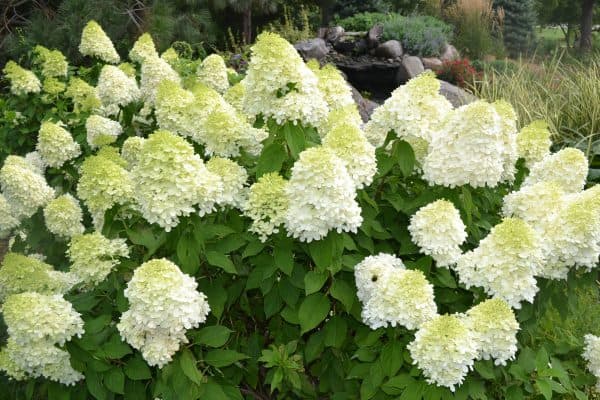Diversifying for Pollinators
It is very interesting how insects, birds, and plants can coexist naturally and amazingly, without killing each other off the planet entirely. Insects are around us, literally everywhere. While I can generally identify some 50 species of insects or more, there are another 200 lurking in my backyard I have no idea about, and another […]
A Story of Blue
There is nothing that compares to fresh, warm blueberries picked early in the morning while the dew is still shimmering. These berries are a favorite among many who have made the trek to Grimm’s Garden’s blueberry patch in early July. We have been picking blueberries for many years now and usually there are clusters of […]
Last Days for Pruning!
When pruning to increase blooming, it is vital to know what time of year the plant blooms. Generally, if it flowers in the spring, it is blooming on growth from last year. If it blooms in late summer or fall, it flowers on new growth in the current year. These two categories of bloomers are […]
Landscape Maintenance: The Who, Why, What, and When
When friends and neighbors ask me what I do for Grimm’s Gardens, I have a difficult time explaining my job. As the landscape maintenance foreman, I have a job that entails much attention to detail, a vast knowledge of plant life and growth stages, electrical and plumbing maintenance, and a willingness to work in all […]
Garden Planning Guide February, March & April
Winter time is the best time to plan and prepare for next year’s gardens. We at Grimm’s Gardens are busy with ideas and preparations for the upcoming spring season. From now until March 1st, we will receive many calls and emails from customers wanting to know if they can plant something, when to plant, do […]
What Will Grow Near a Black Walnut Tree?
Black Walnut trees are wonderful if you are a cabinet maker, eat the walnuts, or leave them as forage for wildlife, or use the husks to make a colorfast dye. But if you are a gardener, they provide a challenge, to say the least. A toxic chemical, juglone, diffuses from the roots into the soil, […]
Plants that Look Great with Snow
#1 Interesting Bark Bark is less noticeable in the summer because it is covered by trees. Winter is the time where plants like this river birch shine! #2 Red Berries #3 Boulders #4 Low Branching Trees and #5 Perennial Seed Heads #6 Evergreens #7 Interesting Shapes […]








